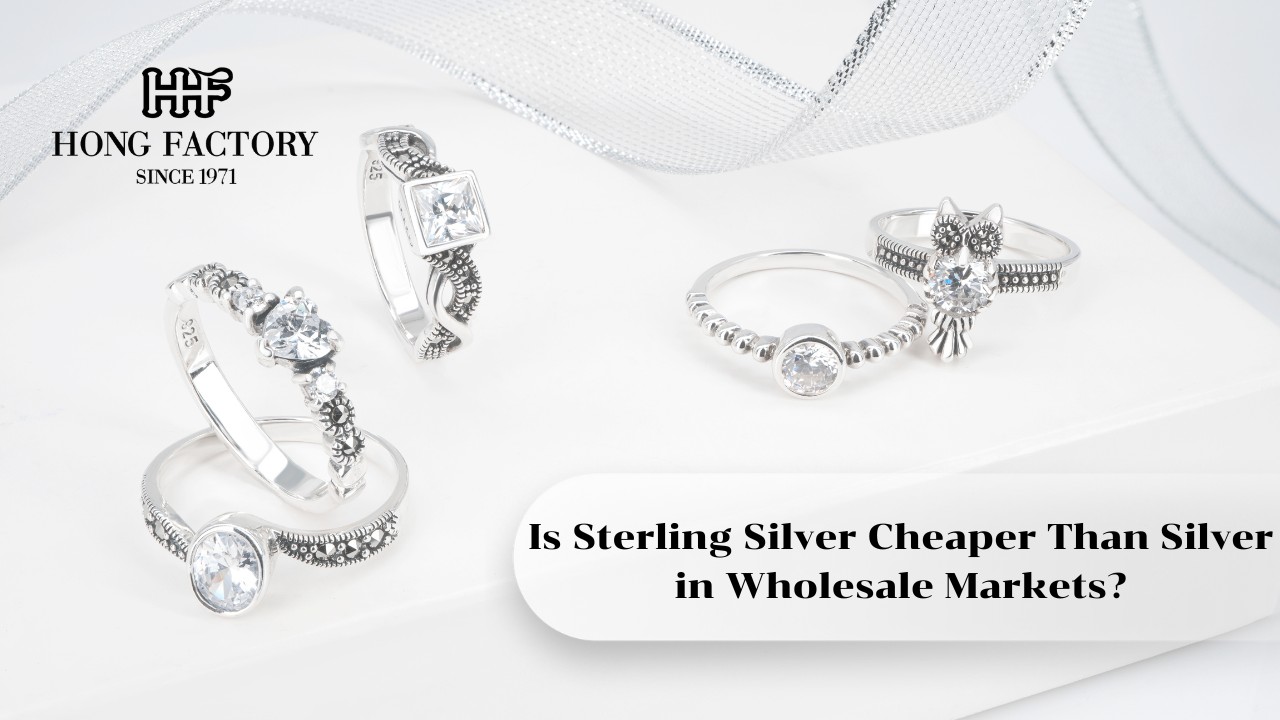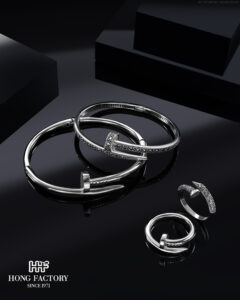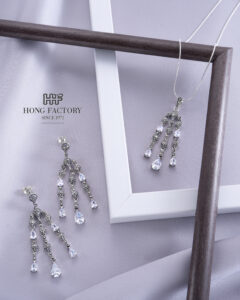
Is Sterling Silver Cheaper Than Silver in Wholesale Markets?
- by admin
When it comes to jewelry production and large-scale sourcing, price and practicality are crucial. Many manufacturers, retailers, and designers rely on wholesale silver markets to purchase materials in bulk. However, one common question often arises: is sterling silver actually cheaper than pure silver when bought at wholesale prices? To answer that, we must understand the differences in composition, pricing structures, and usage within the jewelry industry. Titanium earrings for sensitive ears
Understanding Sterling Silver and Fine Silver in Wholesale Contexts

Before discussing prices, it’s essential to understand what each type of silver represents. Fine silver (99.9% pure) is the purest form of silver available. It is primarily used in investment-grade products like coins, bars, and luxury jewelry pieces. Sterling silver (92.5% silver + 7.5% copper), on the other hand, is a more durable alloy specifically designed for wearable jewelry and practical applications.
In wholesale markets, these differences are significant. The added copper in sterling silver not only lowers the cost per kilogram but also improves workability a critical factor for manufacturers producing thousands of jewelry pieces at once.
Is Sterling Silver Cheaper in Wholesale Markets?
So, Is Sterling Silver Cheaper than fine silver when purchased in bulk? The answer is yes, and for several key reasons. In wholesale trading, prices are determined by metal purity, market demand, and manufacturing suitability. Because sterling silver contains less pure silver, its base cost is naturally lower. Additionally, its physical properties make it more efficient for mass production, reducing waste and labor costs.
Wholesale jewelers and manufacturers typically favor sterling silver because it strikes the perfect balance between affordability and quality. It is strong enough for daily wear, easy to mold and polish, and compatible with gemstones all while being more economical than pure silver.
Why Sterling Silver Dominates Wholesale Jewelry Markets
- Lower Material Costs: Since sterling silver is only 92.5% pure silver, the price per kilogram is significantly lower than that of 99.9% fine silver. This cost difference becomes more pronounced in bulk purchases.
- Better Durability: Fine silver is too soft for mass-produced jewelry, often bending or scratching easily. Sterling silver’s added alloys provide the strength necessary for rings, bracelets, and chains intended for everyday use.
- Ease of Production: Jewelers can work with sterling silver more efficiently during cutting, casting, and polishing processes, which reduces overall production time and cost.
- Consistent Supply: Sterling silver is widely available in international markets, particularly in major jewelry manufacturing hubs like Thailand, India, and China. This accessibility helps stabilize prices and meet global demand.
Because of these advantages, wholesale buyers especially jewelry exporters and manufacturers rely on sterling silver as their primary choice.
Fine Silver in the Wholesale Market
Fine silver, despite its purity, serves a very different purpose in the wholesale sector. Its main applications include:
- Investment bullion and silver bars
- Limited-edition or collectible jewelry pieces
- Religious and ceremonial items emphasizing purity
Fine silver’s higher price per gram and softer texture make it less suitable for mass-market jewelry. It’s favored by luxury brands and niche artisans who emphasize craftsmanship and purity over practicality.
Price Comparison and Market Trends

Wholesale silver prices fluctuate daily according to global silver spot rates. However, on average, fine silver trades at a premium of about 7–10% higher than sterling silver of equivalent weight. This difference can become substantial when purchasing hundreds of kilograms for large-scale jewelry production.
Moreover, sterling silver’s alloy composition helps reduce material loss during manufacturing. Since fine silver can deform or melt more easily, waste tends to be higher another reason many wholesale buyers opt for sterling silver.
Practical Benefits for Manufacturers
Wholesale jewelry manufacturers often choose sterling silver for its practical advantages:
- Compatibility with Gemstones: Its hardness allows secure gemstone settings without deformation.
- Polish Retention: Sterling silver holds its shine well after production, especially when plated with rhodium or palladium.
- Recyclability: Scrap sterling silver can be easily refined and reused without losing its integrity.
- Design Versatility: It’s suitable for casting, stamping, and hand-finishing essential for both machine and artisan production lines.
These factors make sterling silver an economical and efficient choice for jewelry businesses operating on a large scale.
Regional Wholesale Preferences
In global silver hubs like Bangkok, Jaipur, and Shenzhen, sterling silver dominates the wholesale jewelry scene. Thailand, for example, is known for its high-quality sterling silver jewelry exports, favored by international buyers seeking competitive pricing and reliable craftsmanship. Fine silver, in contrast, is mostly traded in bullion form or used for limited collections.
This regional distinction reinforces the idea that sterling silver is not only cheaper but also more adaptable to market demand.
The Role of Purity in Wholesale Marketing
While fine silver carries marketing prestige due to its purity, sterling silver’s affordability makes it more appealing for bulk buyers. Many wholesalers promote .925 sterling silver as a standard of quality, highlighting its balance between purity and strength. In marketing terms, customers still associate sterling silver with luxury even if it’s less pure because of its bright appearance and durability.
Cost-Effective Quality for the Jewelry Industry
So, Is Sterling Silver Cheaper Than Silver in Wholesale Markets? Absolutely. Sterling silver’s lower silver content, improved durability, and ease of production make it the top choice for manufacturers and wholesalers worldwide. Fine silver remains valuable for niche, luxury, or collectible markets, but it cannot compete with the cost efficiency and practicality that sterling silver provides.
In the fast-paced world of jewelry manufacturing, where balance between price and performance is essential, sterling silver stands out as the smart, sustainable, and affordable option. It embodies the perfect harmony of quality, strength, and beauty making it the backbone of the global wholesale jewelry trade.
When it comes to jewelry production and large-scale sourcing, price and practicality are crucial. Many manufacturers, retailers, and designers rely on wholesale silver markets to purchase materials in bulk. However, one common question often arises: is sterling silver actually cheaper than pure silver when bought at wholesale prices? To answer that, we must understand the…